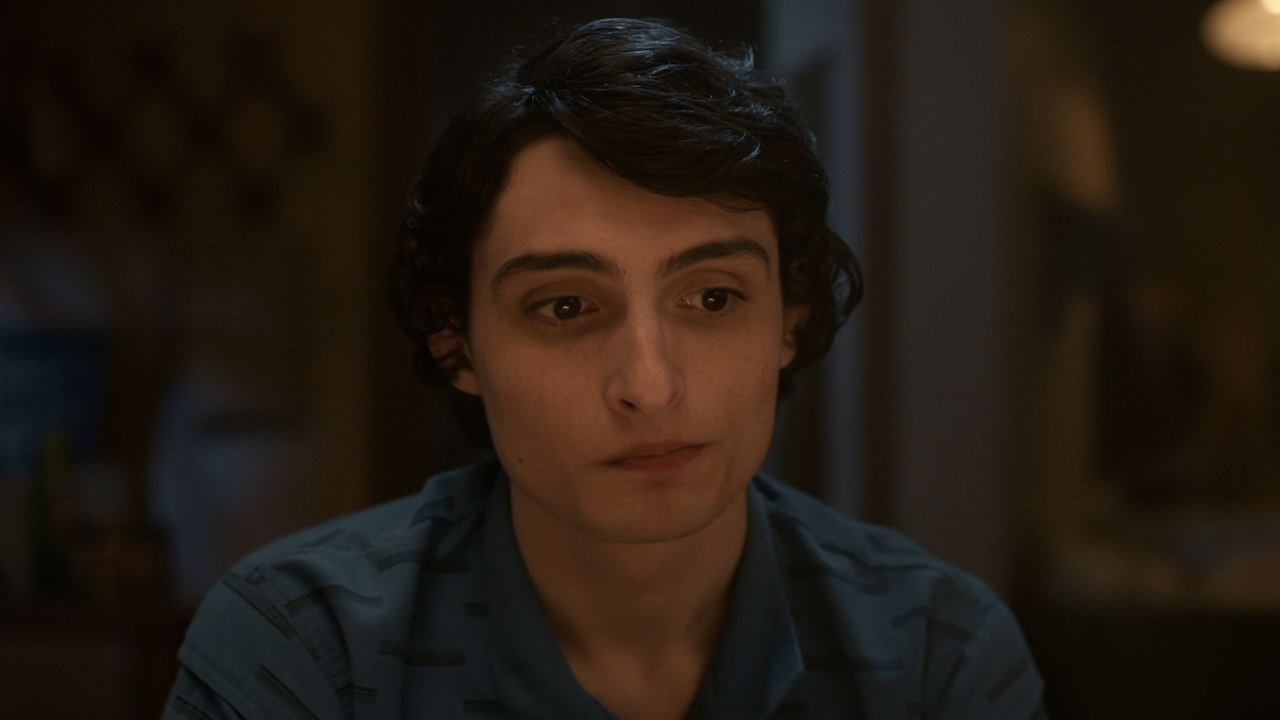To 3D Or Not To 3D: Buy The Right ParaNorman Ticket

In 2009 Laika Studios debuted their first full-length stop-motion animated film, Coraline, and didn't just prove how incredibly lush and imaginative stop-motion could be, but made one of the best arguments at the time that 3D was the way to see it. Since then we've seen dozens of animated films in 3D, and more than a few stop-motion ones too, but few films have used 3D as well as Coraline did, immersing the audiences in the world of the film while also allowing us to marvel at these handmade creations better than ever before.
Now Laika is back with their second feature, ParaNorman, which is also earning rave reviews. But is the 3D as much of a slam dunk this time? Is it still the only way to truly experience the movie? To help you answer that question, here's our latest installment of To 3D or not to 3D, in which we run down the key components of any 3D movie experience and help you figure out which ticket to buy. Before you head out to see ParaNorman this weekend-- and you really should, it's terrific (my full review)-- make sure and read this guide first.
Does It Fit?
Animated films are usually a much better fit for 3D-- that level of control allows you to really make every scene pop-- and that goes double for stop-motion, where there's actually a third dimension, in the world, to pop out. The world of ParaNorman is incredibly visually dense and fun to run around in, and you know the perfectionists at Laika were eager to let that third dimension allow the audience to poke around in their sets as much as they did. ParaNorman doesn't have quite the same surrealism that made Coraline so brilliant in 3D, but its beautifully realized real world is just as perfect for the format.
Fit Score: 5/5
Planning & Effort
It's mind-boggling the amount of work that goes into making a stop-motion feature, crafting every single character and every single scene by hand, using cutting-edge technology to make it all happen, and then shooting the entire movie frame by frame. With the animators and builders working within the 3D environment, they know exactly how the film will look in 3D-- and they actually used technology based on the human eye to craft their own 3D camera. That's right, instead of using a typical 3D camera rig, they shot the film with a DSLR digital camera, and set it on a rig so that the camera would snap one frame from the "left eye" position, then scooch over and shoot from the "right eye." It's the same effect as a 3D camera rig that shoots from the two angles that make the 3D image-- but astonishingly, innovatively fitted to the stop-motion process.
P&E Score: 5/5
Before the Window
Your Daily Blend of Entertainment News
Because everything you see in ParaNorman was real at some point-- yes, even the ghosts that float around in the screen-- it's harder for this film to achieve the "before the window" effect, where something pops out of the screen and practically into your lap. But the movie gets close to it a handful of time, especially in the action-heavy sequences where things really are flying around (again, the innovation in the stop-motion here is incredible). With zombie limbs flailing around, a car flying around hairpin turns on a cliff, and a witch casting spells from the sky, there are a number of moments of pop-out glory in ParaNorman. It really could have stood to be more gimmicky with this effect, given its horror movie roots, but there's plenty to enjoy all the same.
Before the Window Score: 4/5
Beyond the Window
The world of ParaNorman is deep, obviously, because it's real-- that's a real creepy corridor that Norman is walking down, that's a real school auditorium, albeit all in miniature scale. But it's not infinite, and the "beyond the window" score often works best with movies that can create the sense of vast rolling plains, or giant armies, or an endless avenue in Manhattan. So while the depth in ParaNorman is really effective, especially when placing characters within a confined space, it's not quite as stunning as you could get in a CGI animated film. It's not really fair to dock ParaNorman for this, but them's the rules.
Beyond the Window Score:4/5
Brightness
Being a movie about zombies and witches and curses that go into effect after sundown, ParaNorman takes place largely at night, but totally avoids the problem so many 3D movies run into when they don't' compensate for how much dimmer everything looks when you put your 3D glasses on. The brightness in ParaNorman is perfect, allowing for things to get shadowy and spooky when they need to, but popping with color at all the right moments, particularly a fiery finale. The Laika people thought of everything in making this movie, and keeping the screen bright is not a problem at all.
Brightness Score: 5/5
The Glasses Off Test
If you've ever taken off your 3D glasses in a movie and noticed that the screen looks blurry, you know what I'm talking abput-- the general rule of thumb is that the more blur you see, the more the image will "pop" when you put the glasses back on. We've been told by some people who are much more knowledgeable about 3D than we are that this isn't a hard and fast rule-- there are subtle 3D effects that you're just not going to suss out with this method-- but it's a decent test for the amount of effort being put into 3D, especially when you suspect you're being hoodwinked. The amount of blur in ParaNorman varies, as in any movie, and there were definitely a few dialogue scenes where the image had almost no blur at all. But I'm taking the expert's word for it, the quality of the rest of the 3D and the amount of blur in the other scenes-- ParaNorman passes this test enough to prove its worth.
Glasses Off Test: 4/5
Audience Health
Bad 3D has a way of making you feel nauseous, like you can't quite locate yourself in any of the film's dimensions. ParaNorman, as you can probably tell, doesn't have this problem-- the most ill you're likely to get is swooning at the effective design of the long-dead zombies.
Health Score: 5/5
| SCORES RECAP | |
| 3D Fit | 5 |
| P&E | 5 |
| Before The Window | 4 |
| Beyond The Window | 4 |
| Brightness | 5 |
| The Glasses Off Test | 4 |
| Audience Health | 5 |
| Total Score | 32 (out of a possible 35) |
Final Verdict: I started this piece thinking I could point out why ParaNorman's 3D was good but not up to the rapturous standards of Coraline, but as it turns out, ParaNorman's 3D is pretty terrific in general. That still doesn't make it strictly necessary to buy the 3D ticket-- you'll get just as much out of it in 2D, as friends who saw it that way tell me-- but if you want to get an even closer look at the movie's gorgeous stop-motion animation, the 3D won't disappoint you.
This poll is no longer available.
For more 3D analysis, visit our To 3D Or Not To 3D archive right here.
Staff Writer at CinemaBlend

